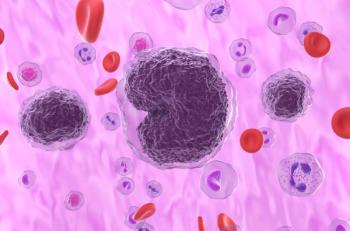
Dr John Frownfelter: The Future of Healthcare Is Prescriptive Analytics
Prescriptive analytics, not just predictive analytics, will make a difference in patient outcomes, said John Frownfelter, MD, FACP, chief medical officer of Jvion.
Prescriptive analytics, not just predictive analytics, will make a difference in patient outcomes, said John Frownfelter, MD, FACP, chief medical officer of Jvion.
Transcript
Is the future of healthcare predictive analytics?
Predictive analytics is essentially risk stratifying patients. That’s already going away and it’s going to become very passé, and I’ll tell you why. Predictive analytics—anyone can do a risk model now and then apply it to a population, and identify patients at risk for everything from who’s at risk from being admitted to the hospital to who’s at risk of not taking their medicine to who’s at risk for dying in the next 30 days. Ok great. But then what? What do you do with that information when you just know they’re high risk?
Oftentimes, these are patients that we already know that that’s likely to happen. And so it doesn’t add to clinical knowledge for a seasoned clinician. Secondly, if it is a patient that we way, “Ok, we’re going to do everything for these high-risk patients,” again, they may or may not be impactable. And then there are a number of patients in these risk models with just doing predictive modeling that the risk actually isn’t true and we’re throwing a lot of good resources after bad, if you will.
Prescriptive analytics isn’t just taking a risk model then, but it really is a different approach using artificial intelligence [AI], big data, and some different approaches that I won’t get into all the math on. But to understand patients holistically and to identify the patients, not only the risk, but again the nature of the risk and then ultimately, which particular interventions are going to change the outcome for that patient.
Now, that all sounds good. If you look at, “well, how do I compare these different approaches for relative benefit?” the first way you compare them is on performance of the model. Which one is better at predicting? Great. If you have a little bit more longevity, you can look at patient outcomes. And what we’re seeing with the application of AI is improved patient outcomes. We’re seeing reductions in hard end points. In oncology, we’re seeing reductions in patients who are admitted to hospice in the last 3 days of life. That’s a phenomenal thing for patients. We’re seeing reductions in emergency room visits and in hospitalizations. We’re seeing decreases in pain scores and a decrease in depression.
These are things by which not only oncology practices are held accountable, but patients care about. And we’re seeing the outcomes. That’s truly success, it isn’t math modeling and who has got a better performance from a model standpoint, but who is changing patient care.
Newsletter
Stay ahead of policy, cost, and value—subscribe to AJMC for expert insights at the intersection of clinical care and health economics.













































